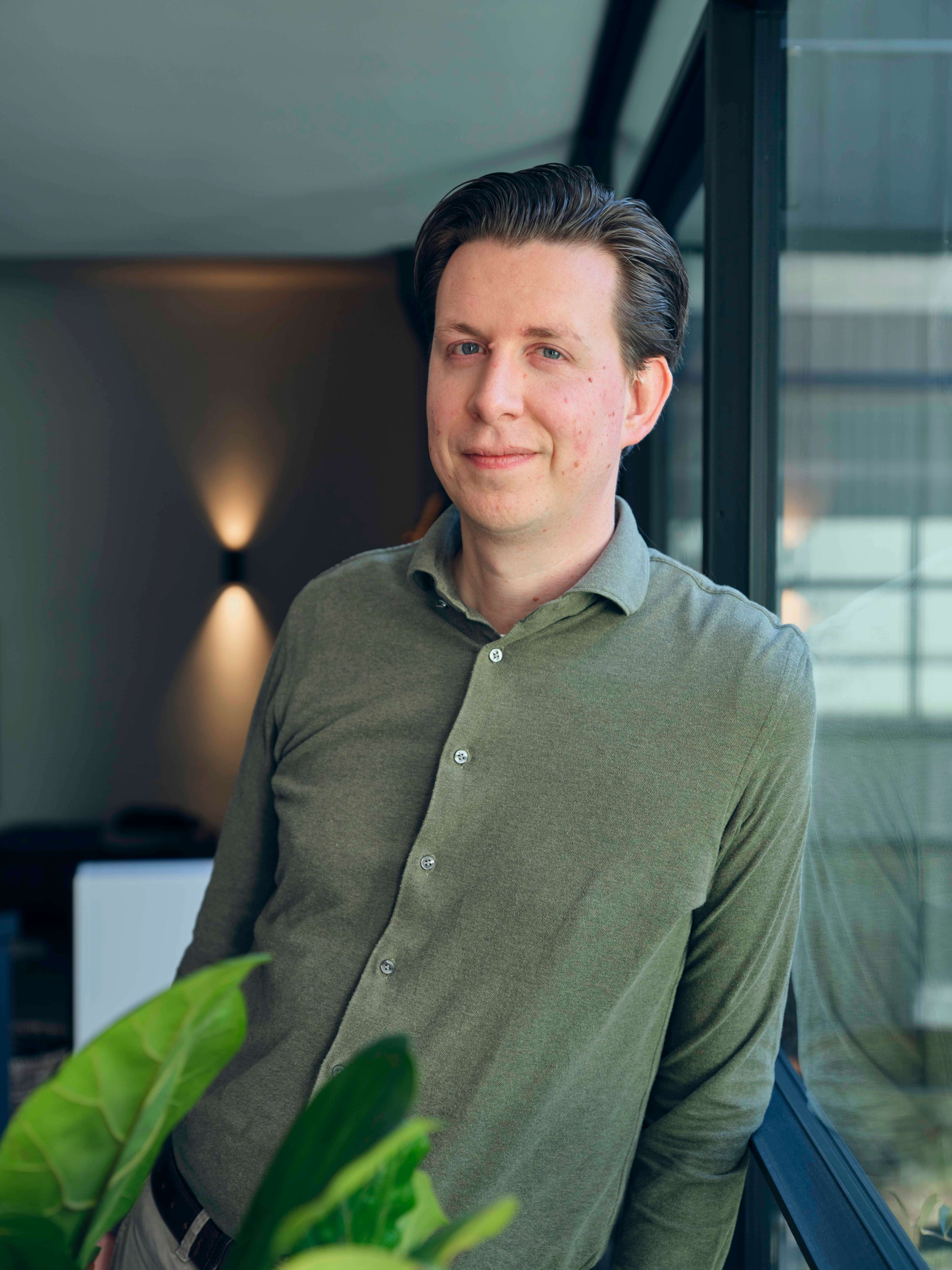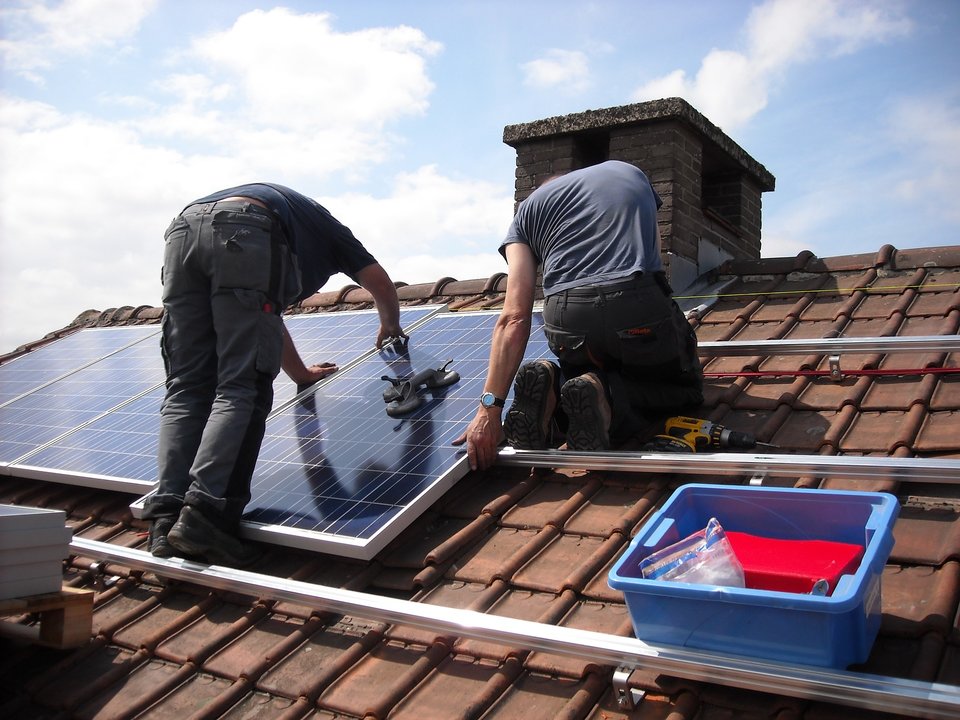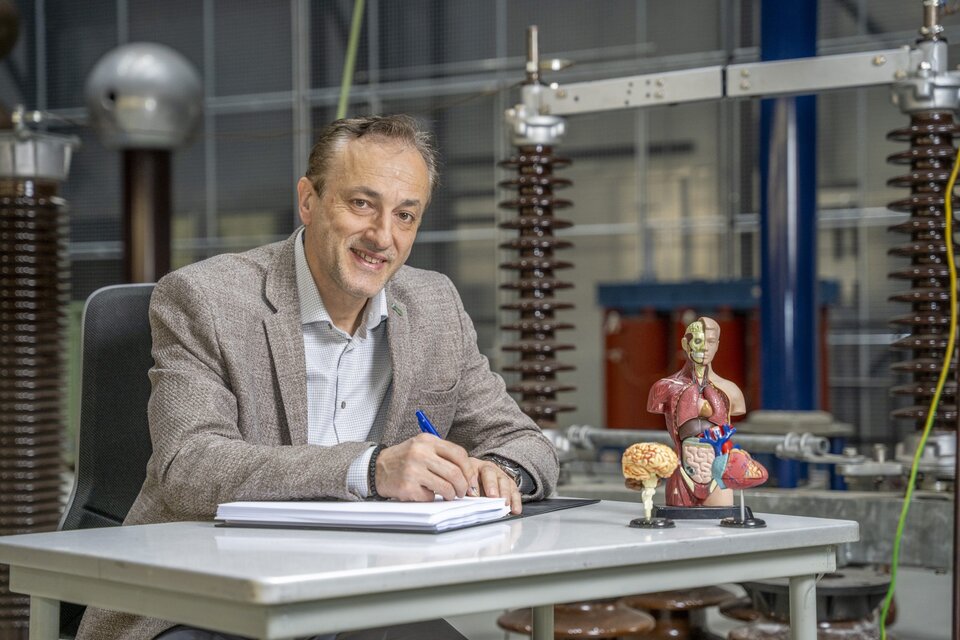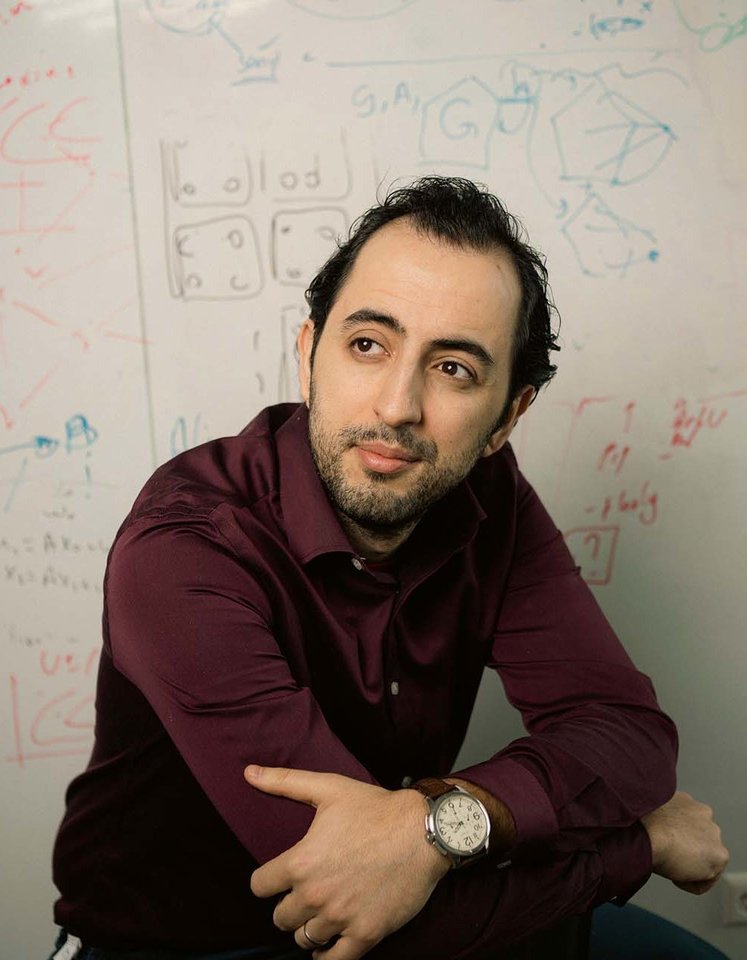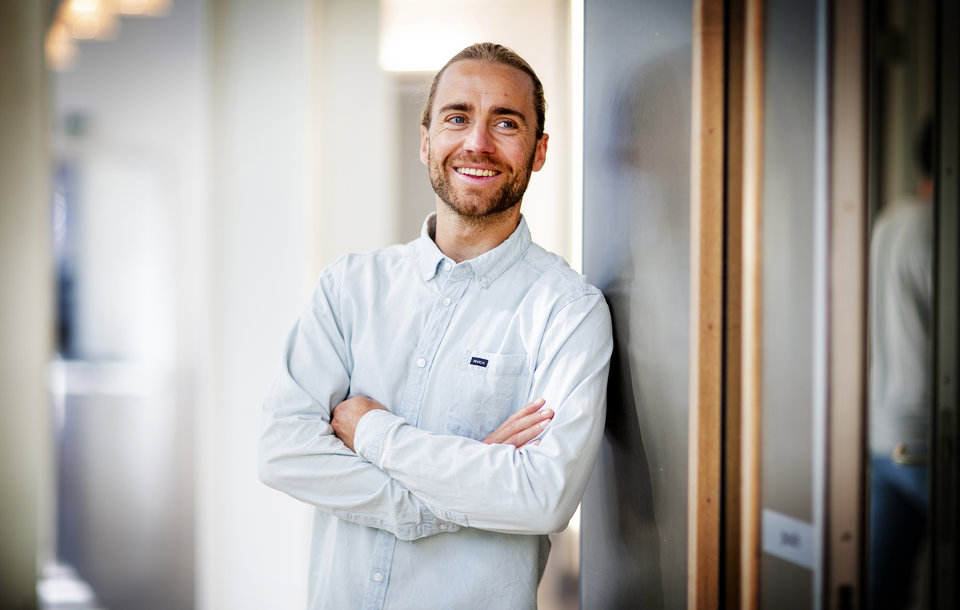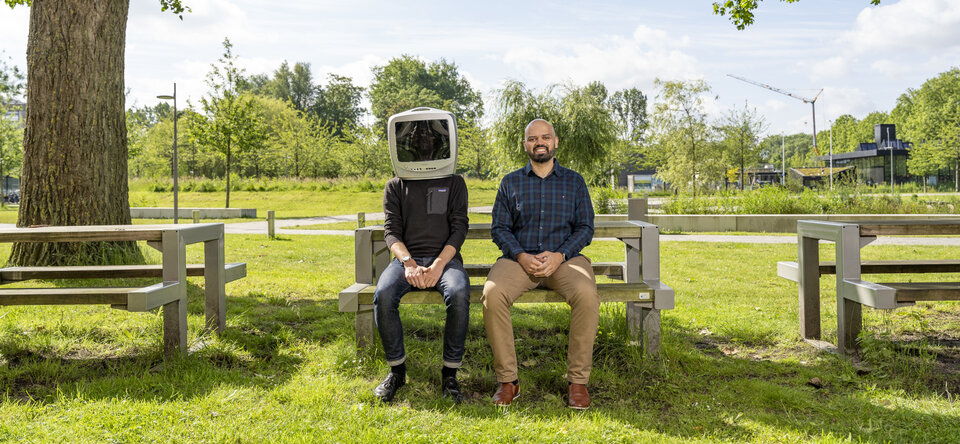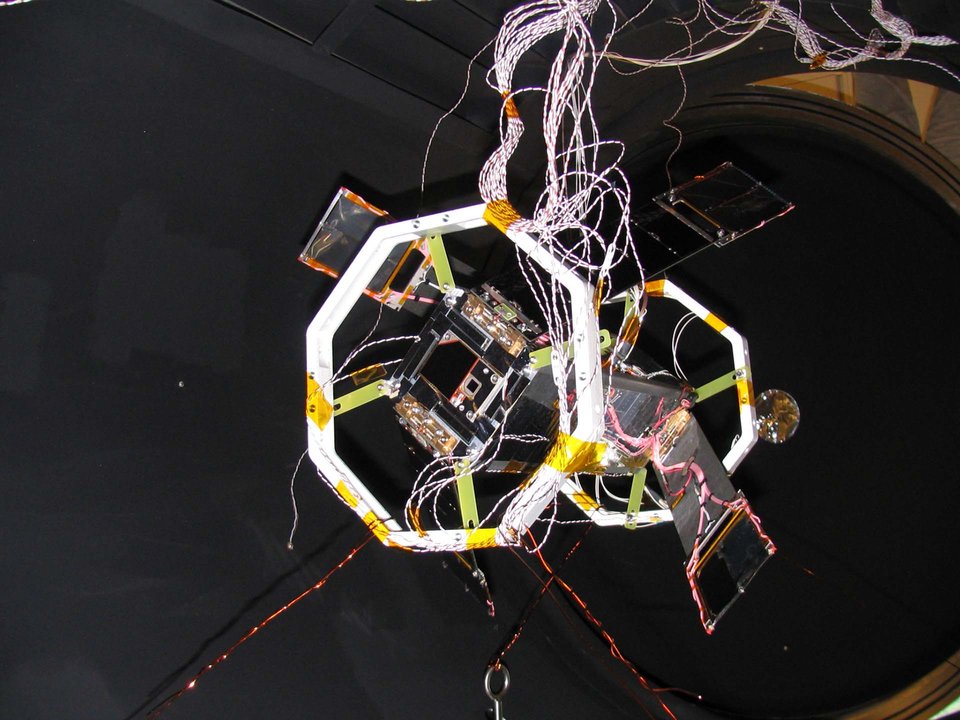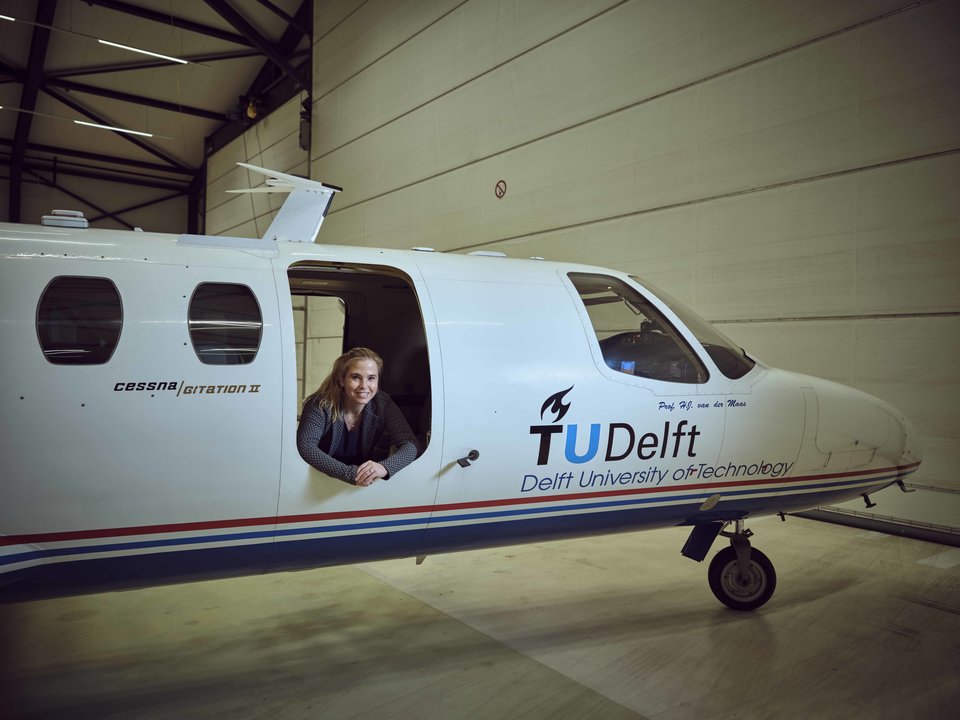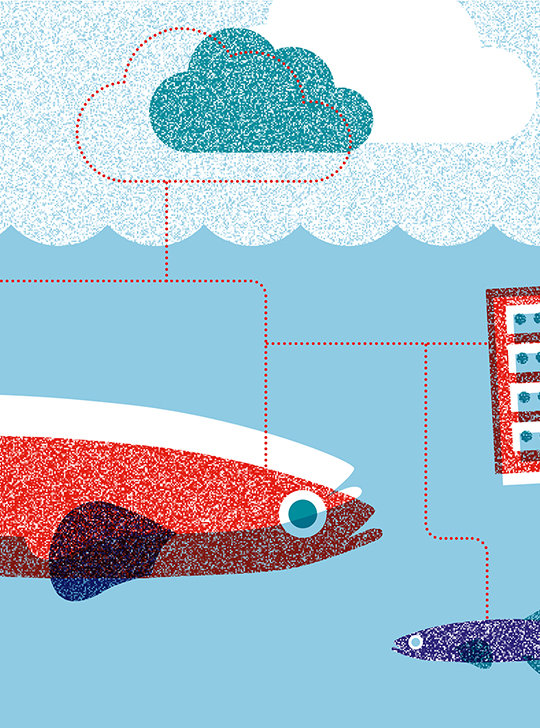Next to transport and direct power generation, a large percentage of fossil fuels and fossil raw materials are used in the chemical industry – in the production of plastics and fertilizer, for example. The energy transition therefore is just as much a raw materials transition, one in which electrochemical processes play a crucial role.
Ruud Kortlever, researcher of large-scale energy storage at TU Delft, says: ‘We’re in a hurry. If we don’t come up with a solution for the raw materials transition within the next 10 to 15 years, then there’s no way we’ll become a carbon-neutral society by 2050 either. That makes it exciting and is a huge motivation. The use of electrochemistry can make the difference in that respect.’
We have excellent universities, and we are surrounded by industry. The Netherlands is optimally positioned to take a leading role. Look at what ASML has achieved, creating a whole high-tech industry from scratch, making themselves indispensable. We can do the same for sustainable chemistry.
Everyone, including the chemical industry, realises that the chemical industry can’t continue to operate the way it has been doing for the past century,’ Ruud Kortlever says. ‘But we don’t yet have a clear and unambiguous solution as to how to best transform the industry.’ Green chemistry already was a hot topic when he studied chemistry himself – a study he completed in 2011 at Leiden University. But only when he ended up in electrochemistry did he realise that he could make a difference. The aim of the researchers in his Electrocatalysis for Energy Storage and Conversion group is to develop sustainable methods to synthesize carbon fuels and building blocks for the chemical industry from small molecules such as carbon dioxide (CO2), water and nitrogen. And he is pressed for time. ‘I think it will become problematic unless we come up with a solution for this raw materials transition within the next ten to fifteen years. That’s what both excites and motivates me.’
Sustainable catalysis
According to Kortlever, electrocatalysis is the ideal solution to attain a fossil-free generation. ‘It is a very clean way of doing chemistry,’ he says. ‘It is a chemical process carried out at room temperature and atmospheric pressure, and the only inputs are green electricity, water and – depending on the reaction you favour – CO2 or nitrogen.’ The most important ingredient is the catalyst, a material that is not consumed during the chemical reaction but that does increase the reaction rate and reduce the energy losses. A catalyst may consist of rare metals such as platinum or iridium, but when converting CO2 to hydrocarbons it is the more mainstream copper. Kortlever: ‘Our aim is to develop systems that are both efficient and free of such rare metals. And we want the catalyst itself to be sustainable; we don’t want to replace an electrode on a daily basis.’
Electron transfer
Some catalytic reactions are quite straightforward: only two electrons are transferred when converting water into hydrogen, and the reaction has only a single intermediate – a molecule that is formed from two or more reactants which reacts further to give products. When converting CO2 to ethylene, twelve electrons are transferred and there are eleven intermediates. ‘Furthermore, the process may lack a high selectivity,’ Kortlever says. ‘In some cases, the reaction yields fifteen other products, next to ethylene. The challenge is to control the catalytic process such that it (nearly) only yields the single desired product, in which case we don’t need any subsequent separation phases that can be very energy-intensive.’
A handful of bulk chemicals
The ideal combination of catalyst(s), reactor geometry and process conditions varies with each end product. A seemingly interminable process, but the sustainable synthesis of only a handful of bulk chemicals already is a big step forward. Kortlever: ‘Ethylene, for example, is the basis for very many polymers. And once you have a green method to synthesize carbon monoxide and hydrogen, you can easily turn these into a large variety of hydrocarbons. Add the electrochemical production of ammonia and methanol electrochemically, and we will have addressed the challenge to a considerable extent.’
A million times larger
The challenges are formidable. Kortlever’s colleagues calculated that a medium-size factory for the conversion of CO2 will require an amount of green electricity equalling five times the world’s largest solar park. And, even at 100% selectivity, almost a fifth of a square kilometre in catalyst surface – a million times larger than the electrolysers currently being tested. Kortlever: ‘The good news is that electrocatalysis has become a very popular field of research, especially when it comes to CO2. Each year, I see breakthroughs I thought unimaginable only five years ago. This fills me with great optimism.’
The approach at TU Delft
Ever since the 1940s, hydrogen has been produced at an industrial scale from natural gas. For this raw material, the focus of electrochemical optimisation is to make the conversion process cheaper, for it to become economically competitive. When it comes to CO2, great advancements are needed to reach both a high current density (a high conversion rate) and high selectivity. ‘We don’t have the luxury to take it one step at a time, we need to accelerate this process of change,’ Kortlever says. ‘At TU Delft, we use a parallel approach, in which we simultaneously work on several scales and in collaboration with various disciplines. Within my group, for example, we study the reactions in detail at the atomic scale. We use this knowledge to design new catalytic materials. In addition, we optimise the process conditions for the conversion reactions: temperature, pressure, pH, the electrolyte, but also the transport of reaction products from and to the catalyst. And we build prototype reactors.’
The Netherlands is optimally positioned take a leading role in sustainable chemistry.
The entire production chain
The parallel approach is applied even broader, covering the entire production chain. It comprises people specialised in scaling a prototype up to production capacity. They explore the heat transfer in such a scaled-up device and delve into the various separation phases that may be required to purify the product. At the TU Delft faculty of Technology, Policy and Management, researchers look at how to best fit all of this into an industrial setting. Still others busy themselves with the upstream side. Do contaminating gasses need to be purged from CO2 captured at, for example, Tata Steel? ‘I continually meet people that bring a completely different perspective to this field of research,’ Kortlever says. ‘That’s what puts us, in Delft, in a unique position. Rather than taking all steps sequentially, and then hand it off to the next person, we can do all of it in parallel.’
Indispensable
At TU Delft, much of the research into electrochemical conversion for the sustainable production of chemicals and fuels is consolidated within the E-refinery institute – comprising five faculties and about a hundred (principal) investigators. Kortlever furthermore is the lead investigator of the RELEASE consortium, comprising seven universities, four “hogescholen” (vocational universities) and roughly thirty companies and social partners. ‘We have excellent universities, and we are surrounded by industry,’ Kortlever says. ‘The Netherlands is optimally positioned to take a leading role. Look at what ASML has achieved, creating a whole high-tech industry from scratch, making themselves indispensable. We can do the same for sustainable chemistry.’

